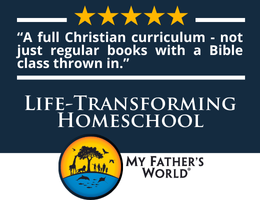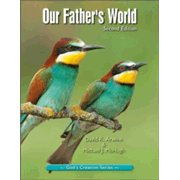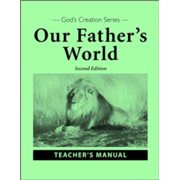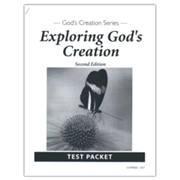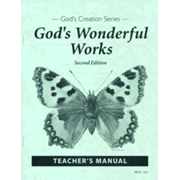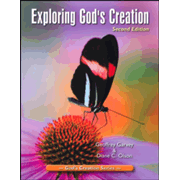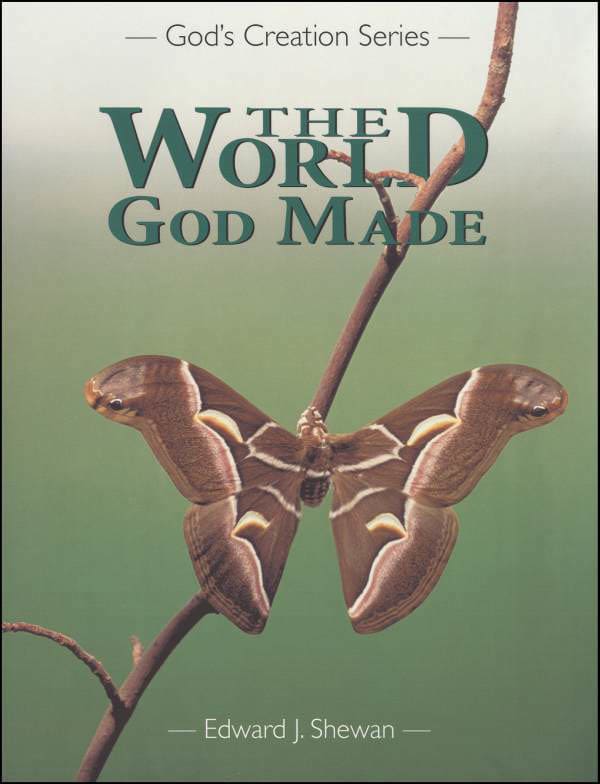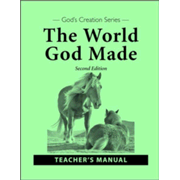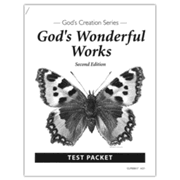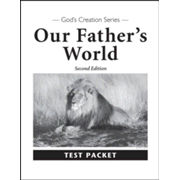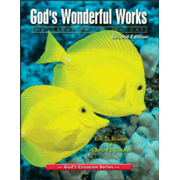Christian Liberty Press's God's Creation science series for kindergarten through third grade is thoroughly creation-based. Courses include Bible verses and biblical references. The kindergarten and second-grade courses follow the days of creation in their organizational structure. The amount of science content ramps up for the second and third grades.
Each course is presented in a consumable worktext. Student books are printed in beautiful, full-color. There are brief, inexpensive teacher's manuals for every course. Test packets are available for grades one through three. Answers to questions in the textbooks are in the teacher's manuals, and answers for tests are in the test packets.
This review is of the second editions for all four courses.
The World God Made
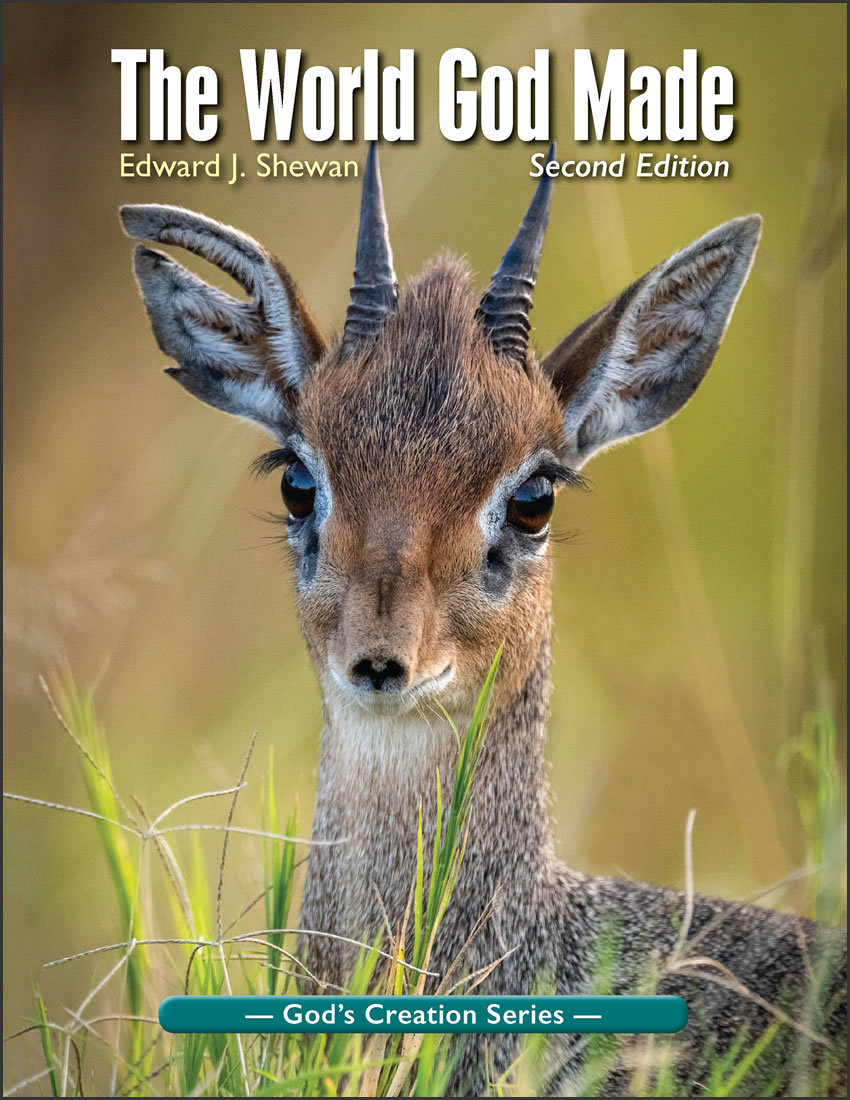 This kindergarten worktext is loaded with large, full-color pictures that are sure to grab the attention of young learners as they learn about the days of creation. The limited amount of text on each page should be supplemented by your own discussion of topics. The teacher's manual provides suggestions.
This kindergarten worktext is loaded with large, full-color pictures that are sure to grab the attention of young learners as they learn about the days of creation. The limited amount of text on each page should be supplemented by your own discussion of topics. The teacher's manual provides suggestions.
Some black-and-white illustrations are intended for children to color, complete the drawing, or follow dot-to-dots. Many, relatively-simple hands-on activities such as collecting rocks, pressing leaves, and planting vegetables are included within the lessons. Each unit concludes with questions that you might want to use orally with most kindergartners.
Our Father's World
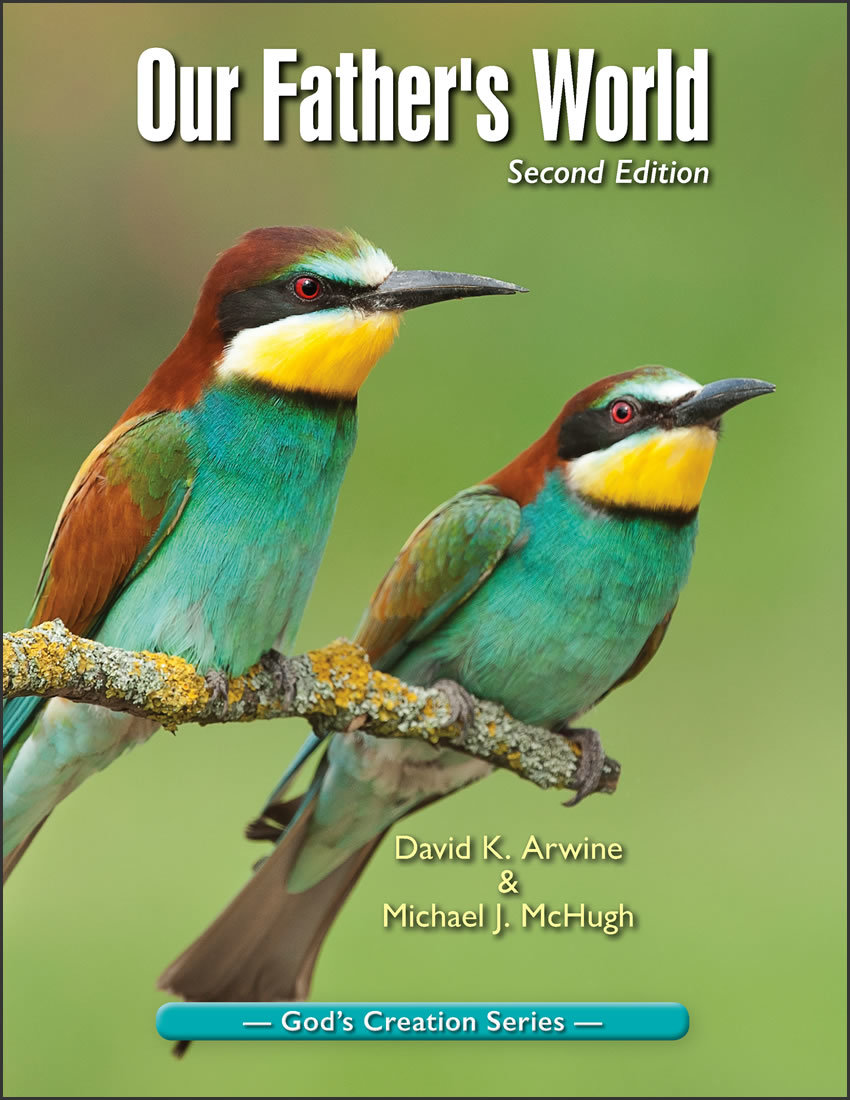
This beautiful, full-color, first-grade text introduces children to science with the theme of "things that God has made." It begins with the concept that God made everything, then follows the progression in Genesis 1 to teach about day and night, seasons, plants, insects, animals, and people.
Each topic has a general introduction followed by selected examples or concepts. For instance, insects are introduced, then special attention is given to metamorphosis, pollination, and the growth cycle of ants, and a few other topics.
While there is a bit of overlap in content with the kindergarten and second-grade courses, Our Father's World also covers some health and safety topics and adds a section called "Studying Things"—activities to help children understand concepts of balance, weight, temperature, flotation, and size. Each chapter has one or more "Something You Can Do" activities. Most of these involve hands-on or experiential learning.
Our Father's World has 8 tests, one for each chapter. Tests have ten to fifteen questions with various combinations of true/false, matching, and multiple-choice questions.
God's Wonderful Works
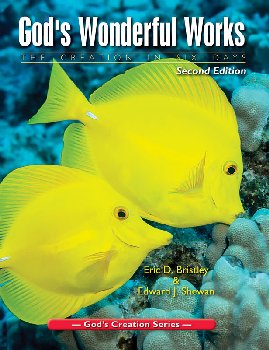
Suggested as a second-grade text, God's Wonderful Works is subtitled "The Creation in Six Days." the book is organized in six sections reflecting what God brought into existence on each day.
While there are topics that repeat from previous levels, in this course they are presented at a more challenging level with additional information. For example, the textbook briefly reviews topics such as the three parts of an insect's body and the process of metamorphosis, both topics that children learned about in Our Father's World. Then students study winged insects, particularly grasshoppers, dragonflies, damselflies, cicadas, and mosquitoes. In addition, they learn the differences between arachnids and insects. The content is appropriate for the second-grade level.
Frequent hands-on activities help convey concepts in every lesson. Examples of some of the activities are drawing pictures of activities that happen during the day or at night, cutting and pasting to create a weather chart, growing paramecium in pond water, and experimenting to watch the pupil of your eye grow larger and smaller.
Three types of questions are at the end of each of the six sections: questions requiring complete sentence answers, matching columns, and filling in the blanks. The sixth section is much lengthier than the other sections, so it has additional sets of questions throughout the section.
The test packet has nine tests for the course. There is one test for each of the first five sections, and four for the sixth section since it is longer than the other sections.
Exploring God's Creation
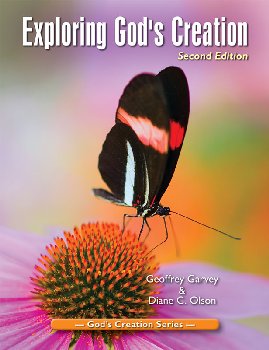 This third-grade text is divided into four units: physics and chemistry, geology and botany, astronomy and weather, and biology and health. Full-color images are frequently used to illustrate the lesson content. The amount of text for students to read is less than in some other third-grade courses, but the hands-on activities and observations play a major role in this course.
This third-grade text is divided into four units: physics and chemistry, geology and botany, astronomy and weather, and biology and health. Full-color images are frequently used to illustrate the lesson content. The amount of text for students to read is less than in some other third-grade courses, but the hands-on activities and observations play a major role in this course.
Hands-on learning is stressed with one or two experiments or activities in almost every one of the book's 30 chapters. The situations and needs of homeschoolers were primary considerations in the development of this book, so it has practical experiments that require household items for the most part. However, you will also need items such as beans to sprout, ten different types of rocks, a copper nail, copper wire, and modeling clay.
Some activities are designed to cause students to apply critical thinking skills. For instance, they are to try to build an electric circuit powered by lemons or oranges, and they might have to do some troubleshooting before they can make it work. Guiding questions are included to help them through the process. Also, when they try to identify rocks by using hardness tests, they will have to do a little research and make judgments about their results.
There are a number of charts to complete such as one that has students chart the weather for two weeks. Also, In the middle of chapters students are sometimes asked to label or identify items or living things. The set of questions at the end of each chapter requires only short answers.
The fourth unit includes an activity that introduces students to research reports. Students identify an insect that interests them then answer a series of questions regarding its development, abilities, and lifestyle. They don't write up an actual report, although you could help them to do so if that seems useful.
The text packet has ten tests for the course, with each test covering two to four chapters.
Summary
The Christian Liberty Press science series offers attractive worktexts at very affordable prices that are easy to use. While you might occasionally find an activity that's not practical, that will be rare. The entire series provides a strong foundation for a biblical, creationist worldview since it continually presents science topics within the context of God's creation.

